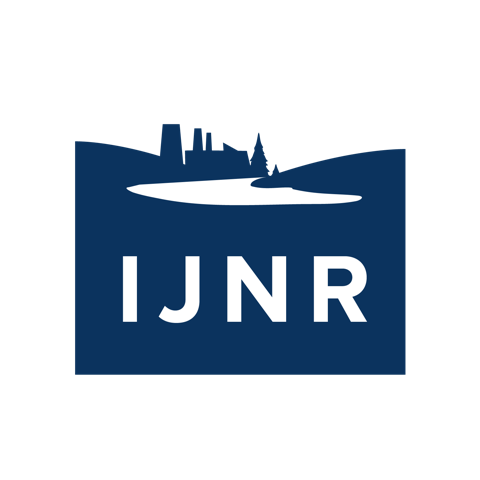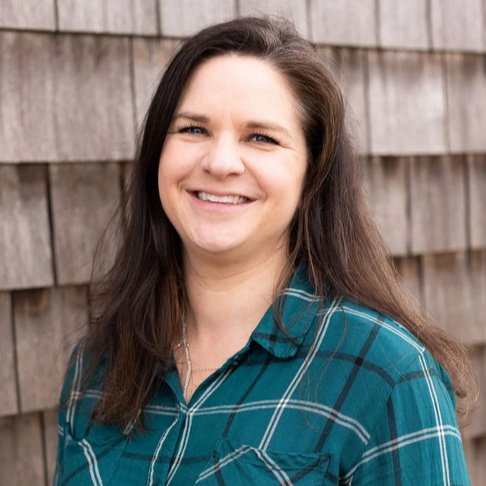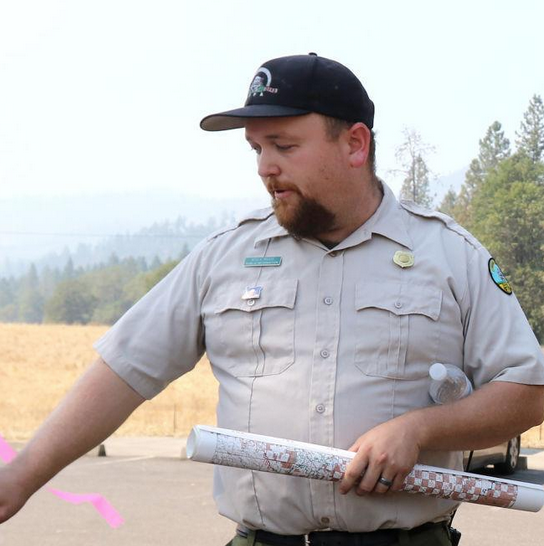Western Wildfire
Institute
Itinerary
SUnday, May 5
IJNR Institute Staff:
Adam Hinterthuer
Director of Programs, Institute for Journalism & Natural Resources
Dave Spratt
Chief Executive Officer, Institute for Journalism & Natural Resources
Shreya Agrawal
Program Assistant, Institute for Journalism & Natural Resources
5:30 - 8:30 p.m. — An Oregon Wildfire Overview: The History, Science and Politics of Fire in the Beaver State
Tucked into the forested environs of Portland’s Washington Park, the World Forestry Center is the perfect location to kick off our Institute. Oregon’s forests evolved with fire, and despite the best efforts of state and federal agencies, it has proven to be an inescapable fact of life in this part of the world – even in the temperate rainforests on the western side of the Cascade Mountains. We’ll get a broad overview of Oregon’s forests, its lucrative timber industry and the growth of conservation movements before getting caught up on the latest developments in wildfire science and policy as primer on all of the things to come in the week ahead.
Chris Dunn
Senior Research Professor, Department of Forest Engineering, Resources & Management and Department of Forest Ecosystems & Society, Oregon State University
Joe Furia
Executive Director, World Forestry Center
Overnight in Portland, Ore.
Monday, May 6
7:30 a.m. — Bus departs for Oregon Department of Forestry Headquarters in Salem
8:30 - 10:30 a.m. — Protecting the Forest and The Trees: A Conversation with Oregon’s Fire Marshal and Its Largest Fire Department
Founded in 1911, the Oregon Department of Forestry oversees 16 million acres of mostly private and state-owned forests, which is more than half of the entire forested acreage in Oregon and makes it the state’s “largest fire department.” ODF’s fire-fighting policy is designed primarily to prevent fire damage to the $60 billion timber resource, but is also tasked with protecting communities and preserving ecosystems. ODF has historically deployed aggressive firefighting tactics to quickly put out fires of any size, a now-outdated practice of complete fire suppression.
But things are quickly changing in this century-old institution. In 2021, the Oregon legislature passed a bill requiring ODF to develop a program that enables more prescribed burning as a tool to mitigate wildfire impacts. In 2022, ODF released a map that labeled the wildfire risk for every taxable lot in the state, an initiative that immediately caused consternation among some members of the public. After residents cited fears that the map would result in rising insurance costs, the state went back to the drawing board.
Complementing ODF’s role in wildfire, the Oregon State Fire Marshal’s office works toward a mission to protect people, property and the environment from the deleterious effects of fire, a mission it pursues by conducting trainings for firefighters, working with communities to promote fire prevention and adaptation measures and helping coordinate emergency response efforts.
We will stop in to the Oregon Department of Forestry’s main headquarters in Salem to meet some of the people responsible for managing the state’s forests and responding to the threat of wildfire as we discuss new trends in fire prevention and suppression, changing attitudes toward prescribed burns and more.
Claire McGrew
Chief Deputy, Oregon State Fire Marshal
Kyle Abraham
Deputy Chief of forest practices and monitoring, Oregon Department of Forestry
Mike Wilson
State Forests Division Chief, Oregon Department of Forestry
Dave Larson
Southern Oregon area director, Oregon Department of Forestry
10:30a - 12:30 p.m. — Travel to Oakridge, Ore.
1 - 5 p.m. — The Fire Next Time: A Collaborative Aims to Mitigate Wildfire Impacts and Build Community Resilience
Nestled into the Willamette National Forest, Oakridge was once a booming timber town. Like many rural communities in Oregon, the close of its sawmills in the 1980s was followed by an economic pivot to outdoor recreation. Today, the surrounding federal lands are still logged for timber, but Oakridge is mostly known as a haven for mountain bikers, hikers and hunters, and tensions remain over how humans should best use the forests that surround it. One thing everyone can agree on is that wildfire puts any of these uses at risk. Of course, fire has always been part of this place: The Kalapuya people who first lived here used fire to make the landscape less susceptible to large wildfires and to promote the well-being of plants and animals important to their ways of life. But after a century of fire suppression and the onset of climate-driven changes to conditions, large fires are becoming all too common and, in the past few years, have burned right up to the edge of town. We will explore the changing relationship with fire, what residents here hope will result from efforts to update the Northwest Forest Plan and how a coalition is working to make Oakridge a stronger, more resilient community with new economic opportunities derived from its most abundant resource.
Sarah Altemus-Pope
Coordinator, Southern Willamette Forest Collaborative/Executive Director, South Willamette Solutions
Heidi Huber-Stearns
Director, Ecosystem Workforce Program (EWP) and Center for Wildfire Smoke Research and Practice, Institute for Resilient Organizations, Communities, and Environment (IROCE), University of Oregon
Molly Juillerat
District ranger, Middle Fork Ranger District, Willamette National Forest, USFS
.
Bryan Cutchen
Oakridge Mayor, SWFC Board of Directors
Dustin Rymph
Project manager, Southern Willamette Forest Collaborative
.
D’Lynn Williams
Westfir Mayor, SWFC Board of Directors
August Reed
Outreach coordinator, Oakridge Air and Southern Willamette Forest Collaborative
.
Brock Buchmeier
Owner, Brock’s Wood Lot
Overnight in Roseburg, Ore.
Tuesday, May 7
7:30 a.m. — Bus departs for Cow Creek Band Tribal Offices
8 a.m. - 2 p.m. — First Land Back, Then Fire Back: The Cow Creek Band Rekindles An Ancient Relationship on Newly Restored Property
The Cow Creek Band of Umpqua Tribe of Indians, named for a primary tributary of the South Umpqua River, is one of nine federally recognized Indian Tribal Governments within the state of Oregon. The Tribe was one of the first two tribes in Oregon to secure a Treaty with the United States of America – a treaty that gave the U.S. 800 square miles while leaving the Tribe landless. In 1980, the Tribe won a U.S. Court of Claims settlement that began the slow process of buying its land back. The Tribe now holds more than 17,000 acres, including the “Joe Hall property,” a primarily Douglas fir monoculture forest that once held numerous, biologically important oak meadows. Tribal elders spoke of a time when these meadows held ample forage from bushes, grasses, and other plants that sustained large populations of game such as elk and deer. Thus began a massive “ecocultural” restoration effort, featuring a tool long banned from the BLM’s patchwork timber land: fire.We’ll pile into assorted vehicles and head out to the Joe Hall property, with Cow Creek Band officials along to show us the results of that work, as well as current fuel reduction efforts to ensure the safe reintroduction of fire to the landscape.
Monte Bryan
Emergency Management Director, Cow Creek Band of Umpqua Tribe of Indians
Wade Christensen
Silviculture Forester, Cow Creek Tribal Forestry
Jesse Jackson
Education Programs Manager, Cow Creek Band of Umpqua Tribe of Indians
Jason Robison
Land and Resources Officer, Cow Creek Band of Umpqua Tribe of Indians
Kyle Reed
Wildfire Mitigation Specialist, Cow Creek Band of Umpqua Tribe of Indians
2 - 4 p.m. — Travel to H.J. Andrews Forest Research Center
5 - 6:30 p.m. — Stories of Fire: A Reporting on Wildfire Happy Hour
When wildfire makes headlines, it is most often because of a currently active blaze. While reporting on this “breaking” element of the bigger issue is important, there is, of course, much more to the story. What kinds of news can be made before burns? What are the stories we should be following after a fire? We will gather with a group of researchers, public information officers and area reporters to talk about the ins and outs of the wildfire beat. Not only will the group offer tips and tricks for getting access and staying safe when reporting on active fires, they will also discuss places where they see holes in current news media coverage and point to potential story ideas to expand the wildfire beat.
EJ Davis
Associate Professor and Director, Oregon State University Extension Fire Program; public information officer trainee, Oregon Department of Forestry
Hollie Smith
Associate Professor, University of Oregon School of Journalism and Communication
Chris Pietsch
Multimedia photojournalist, Eugene Register Guard
Brian Bull
Assistant Professor, University of Oregon School of Journalism and Communication; Reporter, KLCC
.
Al De Vos
Lead public information officer for Incident Management Team 2, Oregon Department of Forestry
Chris Adlam
Regional Fire Specialist, Oregon State University Extension Fire Program (tentative)
.
Dylan Darling
Public information officer, Oregon Department of Environmental Quality; former reporter at the Eugene Register-Guard
Dan Morrison
Senior Instructor, University of Oregon School of Journalism and Communication; Multimedia photojournalist
Jennifer O’Leary Risdal
Fire Communications Officer, Pacific Northwest and Alaska Regions, USDA Forest Service
Overnight at H.J. Andrews Experimental Forest
Wednesday, May 8
8:30 — 11:30 a.m. - Up in Smoke: How A Long-Term Research Forest Lost Experiments But Gained Data From A Fast-Moving Fire
The H. J. Andrews Experimental Forest was established by the U.S. Forest Service in 1948, primarily to facilitate research on efforts to grow and modernize federal forestry practices and understand the impact of different land-use management on yield. In 1980, Oregon State University got involved when the forest became one of the initial sites of the National Science Foundation’s Long-Term Ecological Research program, an effort to conduct long-term data collection and monitoring on different ecosystems across the country. In this case, the goal was to understand how they were changing over time and being impacted by human activity. On August 5, 2023, a lightning strike started the Lookout Fire, which would grow to more than 25,000 acres and burn nearly 80% of the H. J. Andrews forest. The fire was a tragedy in some ways: It burned some of the last remaining old growth in Oregon and destroyed all sorts of scientific equipment and research projects. But the Lookout Fire also brought opportunity. There is, quite literally, no better place to study the ecological effects of wildfire on a forest than in a forest that has 40+ years worth of pre-fire data. We will first head out with H.J. Andrews’ current director to learn about the Lookout Fire, before joining up with some other H.J. Andrews researchers to hear about the research they are conducting in these woods.
Mark Schulze
Director, H.J. Andrews Experimental Forest
David Bell
Research Forester, Pacific Northwest Research Station, U.S. Forest Service
Sidney Bush
Postdoctoral researcher, College of Earth, Ocean and Atmospheric Sciences, Oregon State University
Meagan White
Undergraduate research assistant, Arismendi Laboratory, Oregon State University
11:30 a.m — 12:30 p.m. - Lunch on station
Building Back with Burn Scars: The Long Road to Recovery from the McKenzie Valley Fire
While we spent the morning exploring wildfire as a more academic problem with interesting angles for future research it does, of course, have impacts beyond the woods. In what would become an infamous fire season in Oregon and California, strong eastern winds over Labor Day of 2020 fueled some enormous burns. One, the Holiday Farm Fire, swept down the McKenzie Valley and left many communities in ruins. Out of those ashes, residents began a long, still-ongoing recovery campaign. We will meet with the executive director of a long-term recovery group and hear stories about how these natural disasters don’t end when the flames are extinguished. What are fire survivors in the McKenzie Valley doing now to rebuild? Who connects them to the resources they need? And how do communities attempt to guide restoration efforts to preserve the qualities of their place in the world that drew them there in the first place?
Devin Thompson
Executive Director, McKenzie Valley Long-Term Recovery Group
12:30 - 1 p.m. — Bus travels to put-in spot on McKenzie River
1 - 4 p.m. — When Fire and Water Mix: How Aquatic and Riparian Ecosystems Feel the Impact of Forest Fires
While charred stands of trees are an obvious sign of an ecosystem impacted by wildfire, the consequences of big burns on aquatic ecosystems can be harder to see. But that doesn’t mean that what happens in the forest doesn’t eventually reach the stream. We will explore this topic in the context of the Holiday Farm Fire and its effect on the McKenzie River as we learn about the recovery of shoreline habitat, freshwater fisheries and river water quality. And we’ll do it all in 16-foot rafts as we navigate 10 river miles with a group of researchers and community members.
Bob Spencer
President, McKenzie Watershed Protective/Owner, McKenzie River Fishing Guides & Rafting Tours
Richard Nauman
Ecologist, ArcGIS Living Atlas Environment Team
Overnight in Bend, Ore.
Thursday, May 9
9 a.m. - Noon — Fighting Fire with Fire: Why Prescribed Burns May Be the Best Tool Yet in the Firefighting Toolkit
Moving east over the Cascade Mountains, you leave the temperate rainforest and enter a high desert, characterized by scarce rain, low-elevation sagebrush, mid-elevation ponderosa pines and mixed conifers, and higher-elevation lodgepole pines. It’s a fire-adapted landscape, and to keep it healthy it must periodically burn. A network of prescribed fire practitioners has been selectively burning in Central Oregon to remove fuels, foster greater forest resilience and climate adaptation, and mitigate the risks and impacts of extreme wildfire.
Jodie Barram
Co-Coordinator, Oregon Living With Fire
Jean Nelson-Dean
Public Affairs Officer, Deschutes National Forest (retired)
2 - 5 p.m. — Conflict of Interests: Exploring the Intersection of Fire Mitigation, Logging and Outdoor Recreation
The West Bend Project is a 26,000-acre, 15-year-long logging operation with the goal to both harvest marketable timber and also thin out a section of the Deschutes National Forest close to Bend. But what started as a relatively innocuous forest thinning effort to make the area more resistant to wildfire turned contentious once trees started coming down near popular hiking and bike trails. Many of the trees removed were 80-100 years old and the gaps these large trees left in the forest were too notable to overlook. Not only that, the carbon storage potential of these more mature Douglas firs and Ponderosa pines is immense, a fact underscored by a letter the Bend City Council sent to the Deschutes National Forest, urging them to protect these bigger trees and keep them out of logging plans. Local foresters say mature trees made up only 1 percent of those cut, but the debate is on in Bend about how to mitigate climate change while also mitigating wildfire risk. We’ll head to a couple logging sites to see the forest for the trees.
Erik Fernandez
Wilderness program manager, Oregon Wild
Overnight in Bend, Ore.
Friday, May 10
8:30 a.m. - 12:30 p.m. — From the Ashes: The Community and Ecological Sides of Post-Fire Recovery
The 2020 Labor Day fire event resulted in five “megafires” and a dozen others all burning simultaneously. The Santiam Fire was one of those megafires, formed when three other fires merged. No community in Oregon was hit harder than Detroit, a tiny town of, in 2020 at least, a little over 200 people. After the fire, only three structures in town were left standing. A fire of that magnitude was, of course, also a destructive force in the surrounding forests. We will spend some time in this area and see what recovery looks like, both at the community and the ecological level. How has post-fire management helped bring signs of life back to a place that almost literally burned to the ground? What can these efforts in Detroit teach us about how we respond to the next big burn?
Casey Kulla
State Forest Policy Coordinator, Oregon Wild
Arran Robertson
Communications manager, Oregon Wild
Melissa Baurer
Recovery Manager, Santiam Valley Long-Term Recovery Group; Director, Integrated Health and Outreach, Santiam Hospital,
12:30 - 2 p.m. — Return to Portland
3 p.m. - Telling Environment Stories Better
Now that we’ve reached the end of the week, it’s time to consider all we’ve learned. We’ll have a free-ranging, informal conversation about wildfire and what we as journalists can do to improve public understanding.
7 p.m. - Western Wildfire Institute closing dinner and awards ceremony.
Dinner and overnight in Portland











































